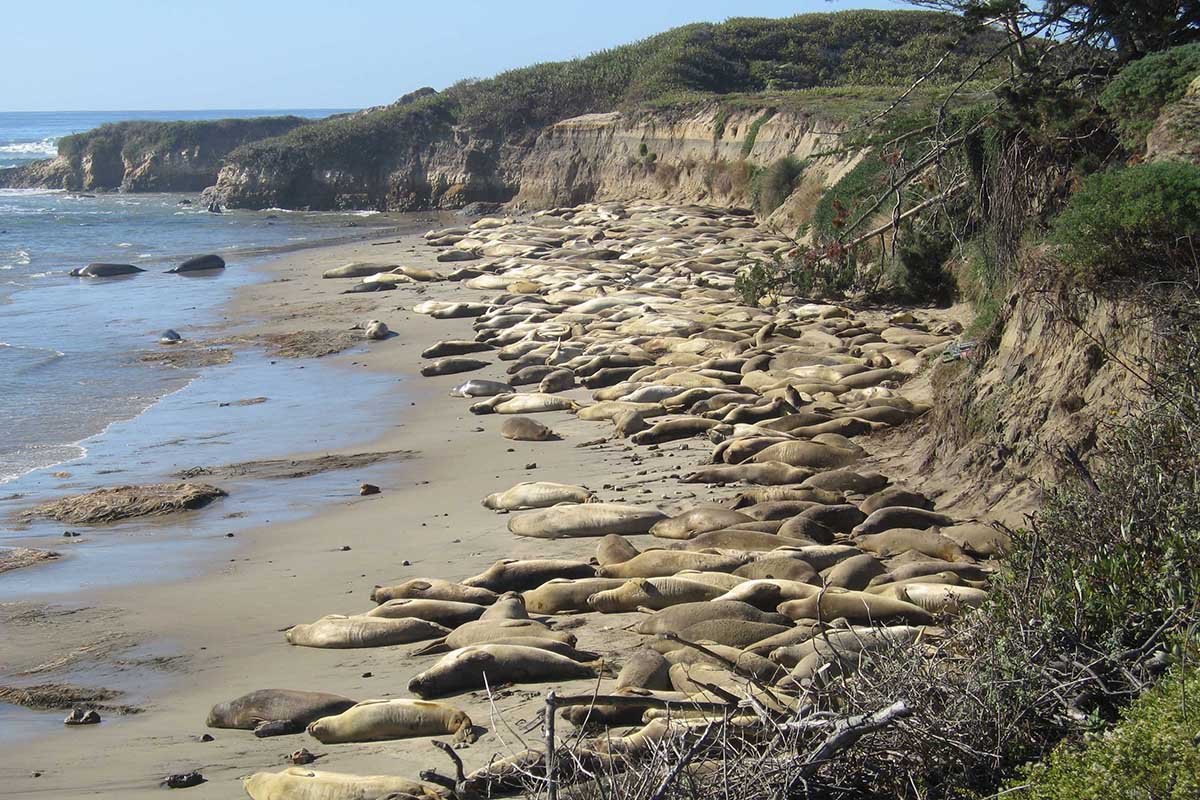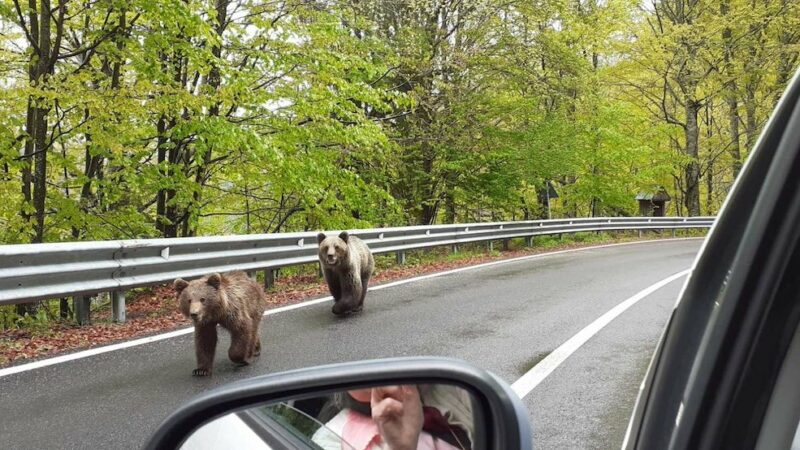Experience California’s Coastal Wildlife on This Nature-Filled Road Trip
Winter is a great time to drive California’s coast and view incredible wildlife, from elephant seals to monarch butterflies. Take a road trip to explore a few of the state’s best wildlife-viewing spots along California’s central coast. Start a bit south of San Francisco and finish in Santa Barbara, or opt for the south-to-north route and sample these spots in reverse.
Videos by Outdoors
However you choose to visit these locations, always view wildlife from a safe, respectful, and legal distance (keep in mind laws like the Marine Mammal Protection Act). Be prepared for inclement weather, and always be aware of the ocean by being careful near it and never turning your back on it.
This road trip also includes several spots to explore and learn, including natural history museums, a world-renowned aquarium, and a marine life museum right on a wharf. Bring your binoculars and get ready to explore California’s coastal wildlife.
Elephant Seals at Año Nuevo State Park

To explore Año Nuevo State Park in winter, it’s best to plan ahead. Explore this park, which is located a little over an hour south of San Francisco, by going on a guided walk to view elephant seals during pupping season. Purchase a ticket in advance online to join a docent-guided walk. These walks are scheduled between mid-December and late March and involve walking 3-4 miles. Equal access tours are available for people with mobility challenges who cannot walk this distance. Self-guided elephant seal viewing is also available from April to November.
Monterey Bay Aquarium and Pacific Grove Monarch Sanctuary
Visit a butterfly sanctuary, a natural history museum, and one of the world’s best known aquariums in Monterey and Pacific Grove.
First, stop by Pacific Grove’s Monarch Grove Butterfly Sanctuary. If you’d like to see the monarchs cluster together, visit early or on cool days. They tend to cluster in the morning or when the weather is below 55 degrees Fahrenheit, especially on cloudy days. For a shot at seeing these gorgeous orange butterflies in flight, come midday or on warm, sunny days. Be mindful of where you step, since monarchs are often present on the pathways. Monarchs generally start arriving in October and many stay over the winter.
Monterey Bay Aquarium is celebrating its 40th anniversary this year. Be mesmerized by tanks of jellyfish propelling themselves around, see Pacific mackerel endlessly circle, and spot an array of critters swimming around the 28-foot-tall kelp forest exhibit—from the wolf eel to warty sea cucumbers, red octopus, and more. See an exhibit focusing on deep-sea animals, visit the aviary to see birds, and stop by the touch pools to interact with animals.
Piedras Blancas Elephant Seal Rookery near San Simeon
Just a few miles from Hearst Castle, the Piedras Blancas Elephant Seal Rookery provides a free place to see elephant seals. Park in the lot on the west side of the road and walk a short boardwalk to the viewing area. Docents are often available on site to share information about the elephant seals.
Hearst San Simeon State Park is launching new educational elephant seal tours that run from January through early March on Thursdays, Fridays, and Saturdays. These tours include information on the elephant seal life cycle, as well as viewing opportunities.
Monarchs in Pismo Beach
Monarch lovers should be sure to visit Pismo Beach Monarch Butterfly Grove to spot some of the thousands of butterflies that visit the site annually. On December 1, 2023, more than 16,000 butterflies were counted in the site’s census. Stop by from late October to February to see clusters of butterflies in eucalyptus trees along their migratory route. On cooler days, you might see them clustered together, while on bright sunny days, you might be able to watch the butterflies dance in the sky above your head. Docents on site can help you pick out the clusters, which can be hard to see since they resemble winter foliage.
Whales, Gardens, Birds, Museums, and More in Santa Barbara
In 2023, the new Santa Barbara Channel Whale Heritage Area was designated by the World Cetacean Alliance and World Animal Protection. It is only the second such Whale Heritage Area in the U.S. (following one in Dana Point, California).
The Santa Barbara Channel sees a wide variety of whales, including humpbacks, blue whales, fin whales, and many others. To see them, consider joining a local whale-watching tour. A number of whale-watching tour options are available, including the 75-foot Condor Express, Santa Barbara Sailing Center’s catamaran, and many more. There are also a number of spots where you might be able to spot whales from land, including the Douglas Family Preserve.
To see a massive blue whale skeleton that is more than 70 feet long, venture to the Santa Barbara Museum of Natural History, which has the skeleton out front, as well as a number of exhibits within. The museum’s Sea Center on Stearns Wharf also offers a number of interactive exhibits like the Wet Deck, where explorers can learn about ocean research, as well as plenty of animal exhibits where you can observe sea life firsthand. The museum also includes areas where you can look out over the ocean to watch for whales and other wildlife. The Santa Barbara Maritime Museum also features numerous ocean exhibits about whales, diving, ships, and more.
The Santa Barbara Botanic Garden is a great place to go for a walk or hike along the more than 5 miles of trails, and you may be able to spot wildlife like deer, birds, butterflies, and more. The garden was established in 1926 and now covers 78 acres and displays around 1,000 plant species. Explore a peaceful redwood grove, desert habitat, and more, as well as fields of wildflower-packed meadows in spring and early summer. Some spots even have views of the ocean and Channel Islands.
Andrée Clark Bird Refuge is a great spot for birders, since more than 200 bird species have been spotted in the 42-acre park. It includes a lake and estuary, a path for pedestrians and cyclists, as well as walking trails. Three observation platforms are available for viewing birds and wildlife, and the refuge is also a good spot to look for turtles.
Source: https://outdoors.com/experience-california-coastal-wildlife/






